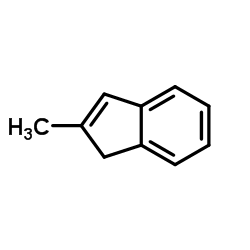165688-64-2
| Name | 2-methyl-1H-inden-1-ide,zirconium(4+),dichloride |
|---|---|
| Synonyms |
Bis(2-methylindenyl)zirconium(IV) dichloride
MFCD00672121 |
| Melting Point | 234-237ºC |
|---|---|
| Molecular Formula | C20H18Cl2Zr |
| Molecular Weight | 420.48700 |
| Exact Mass | 417.98300 |
| LogP | 5.93500 |
|
Section 1: Product Identification Chemical Name:Bis(2-methylindenyl)zirconium dichloride, 98% CAS Registry Number:165688-64-2 Formula:[(CH3)C9H6]2ZrCl2 EINECS Number:none Chemical Family:arene-metal complexes Synonym:Zirconium, dichloro[(1,2,3,3a,7a-.eta.)-1H-2-methyl-inden-1-yl]-
Section 2: Composition and Information on Ingredients IngredientCAS NumberPercentACGIH (TWA)OSHA (PEL) Title compound165688-64-2100%5mg/m3 (as Zr)5mg/m3 (as Zr) Section 3: Hazards Identification Emergency Overview:Irritating to skin and eyes. May be irritating to respiratory tract. Primary Routes of Exposure:skin, eyes, ingestion Eye Contact:Causes moderate irritation of the eyes. Skin Contact:Causes moderate irritation of the eyes. Inhalation:May be irritating to the nose, mucous membranes and respiratory tract. Ingestion:No information on the physiological effects of ingestion. Exposure to moisture slowly produces hydrochloric acid. Irritating to skin, eyes. May be irritating to the Acute Health Affects: respiratory tract. Chronic Health Affects:No information available on long-term chronic effects. NTP:No IARC:No OSHA:No SECTION 4: First Aid Measures Immediately flush the eyes with copious amounts of water for at least 10-15 minutes. A victim may need Eye Exposure: assistance in keeping their eye lids open. Get immediate medical attention. Wash the affected area with water. Remove contaminated clothes if necessary. Seek medical assistance if Skin Exposure: irritation persists. Remove the victim to fresh air. Closely monitor the victim for signs of respiratory problems, such as difficulty in Inhalation: breathing, coughing, wheezing or pain. In such cases seek immediate medical assistance. Seek medical attention immediately. Keep the victim calm. Give the victim water (only if conscious). Induce Ingestion: vomiting only if directed by medical personnel. SECTION 5: Fire Fighting Measures Flash Point:no data Autoignition Temperature:no data Explosion Limits:no data Extinguishing Medium:carbon dioxide or dry powder If this product is involved in a fire, firefighters should be equipped with NIOSH approved positive pressure Special Fire Fighting Procedures: self-contained breathing apparatus. Hazardous Combustion andIf involved in a fire this material may release toxic and corrosive fumes. Decomposion Products: Unusual Fire or Explosion Hazards: No unusual fire or explosion hazards. SECTION 6: Accidental Release Measures Small spills can be mixed with calcium carbonate, sodium bicarbonate or other appropriate acid neutralizing Spill and Leak Procedures: non combustible solid and swept up. SECTION 7: Handling and Storage The material will degrade on prolonged exposure to moisture. Keep bottle tightly sealed and away from heat Handling and Storage: and light. Handle in a dry atmosphere. SECTION 8: Exposure Controls and Personal Protection Eye Protection:Always wear approved safety glasses when handling a chemical substance in the laboratory. Skin Protection:Wear protective clothing and gloves. Ventilation:If possible, handle the material in an efficient fume hood. If ventilation is not available a respirator should be worn. The use of respirators requires a Respiratory Respirator: Protection Program to be in compliance with 29 CFR 1910.134. Ventilation:If possible, handle the material in an efficient fume hood. Additional Protection:No additional protection required. SECTION 9: Physical and Chemical Properties Color and Form:yellow powder Molecular Weight:420.49 Melting Point:no data Boiling Point:no data Vapor Pressure:no data Specific Gravity:no data Odor:may have an acidic odor Solubility in Water:reacts with water SECTION 10: Stability and Reactivity Stability:moisture-sensitive solid Hazardous Polymerization:No hazardous polymerization. Conditions to Avoid:exposure to moisture Incompatibility:water, strong oxidizing agents Decomposition Products:carbon dioxide, carbon monoxide, hydrogen chloride, organic fumes and zirconium oxide SECTION 11: Toxicological Information RTECS Data:No information available in the RTECS files. Carcinogenic Effects:no data Mutagenic Effects:no data Tetratogenic Effects:no data SECTION 12: Ecological Information Ecological Information:No information available SECTION 13: Disposal Considerations Disposal:Dispose of according to local, state and federal regulations. SECTION 14: Transportation Shipping Name (CFR):Corrosive solid, Acidic, Organic, N.O.S. Hazard Class (CFR):8 Additional Hazard Class (CFR):NA Packaging Group (CFR):II UN ID Number (CFR):UN# 3261 Shipping Name (IATA):Corrosive solid, Acidic, Organic, N.O.S. Hazard Class (IATA):8 Additional Hazard Class (IATA):NA Packaging Group (IATA):II UN ID Number (IATA):UN# 3261 SECTION 15: Regulatory Information TSCA:Not listed in the TSCA inventory. SARA (Title 313):Title compound not listed Second Ingredient:none SECTION 16 - ADDITIONAL INFORMATION N/A |



